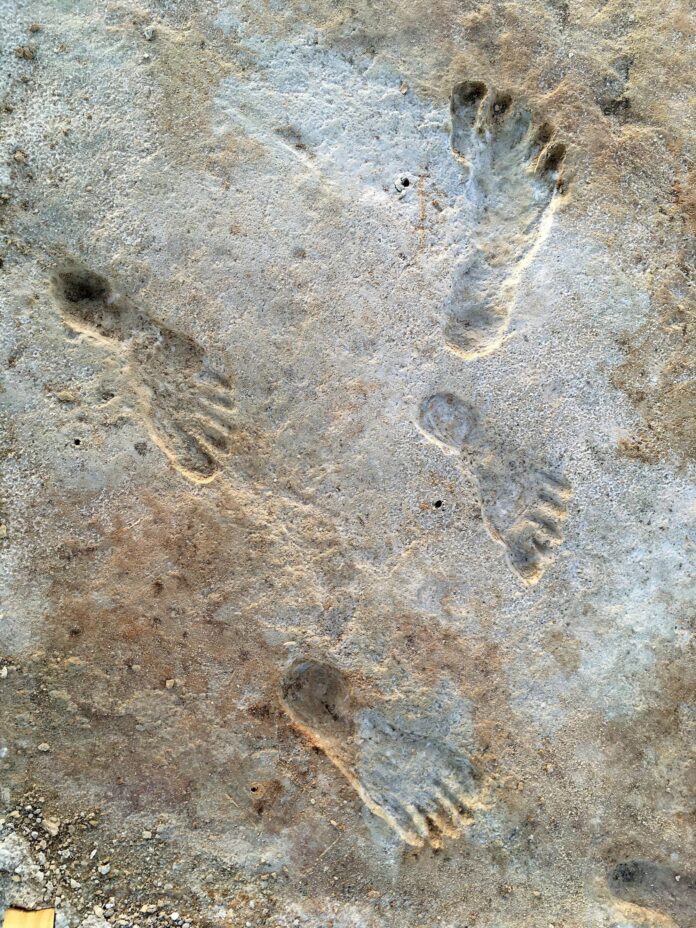New tests have confirmed that a set of fossilised human footprints in New Mexico are between 21,000 and 23,000 years old, making them the oldest evidence of human life in the Americas. Additional methods of dating have validated the previously disputed age range, and opened the door to further research into the extended history of human life on the continent.
The new estimate is a verification of tests completed in 2021 by the US Geological Survey, in which small plant seeds embedded beneath the footprints were used for carbon dating. Due to concerns that the type of seed dated may be unreliable, additional plant matter contained in nearby rock was similarly carbon dated, producing equivalent estimates. Further evidence came from Quartz grains within the footprints, whose optically-stimulated luminescence provided a measure of the amount of energy the crystals trapped and retained over time. The latest tests corroborated the 2021 findings, calculating a minimum age of 21,500 years for the fossils.
Discovery of human life in the Americas within this range is notable for its large deviation from prior estimates. As the new findings, published last week in Science, detail, experts have conventionally hypothesised that mankind arrived on the continent between 16,000 and 14,000 years ago. Tools found in Clovis, New Mexico in the 1930s had long served as the oldest archaeological anchor in a history of human migration and settlement in the region, in part due to assumptions that earlier habitation would have been hindered by the most frigid era of the prehistoric Ice Age. The footprints examined in the 2023 study were uncovered in White Sands National Park, a physically nearby yet vastly different geological area from the Clovis site.
White Sands National Park, now a vast sandy desert, houses fossils made in and around prehistoric lakes, with human footprints resting beside those of the giant cats, mammoths and sloths that occupied the land prior to its gradual change of climate. The 5,000- to 9,000-year shift in estimates of the earliest human presence in the Americas is significant not only due to the potential for uncovering a greater range of archaeological samples, but due to its implication that humans crossed from Asia to Alaska before the northern reaches of the continent began to thaw.
“Indigenous peoples were there earlier than thought, before the great ice barrier at the height of the last glacial maximum closed the way south from Alaska,” Matthew Bennett, a co-author of the new study and professor at Bournemouth University, told Reuters. “By what route and how they got there is yet to be determined. White Sands is just one point on the map for now.”
While some questions about the White Sands footprint estimate linger among critical scientists, archaeological groups are finding the updated human timeline to be a positive development, prompting newfound interest in revising and expanding what we know about artefacts and notable sites of human prehistoric habitation.

























